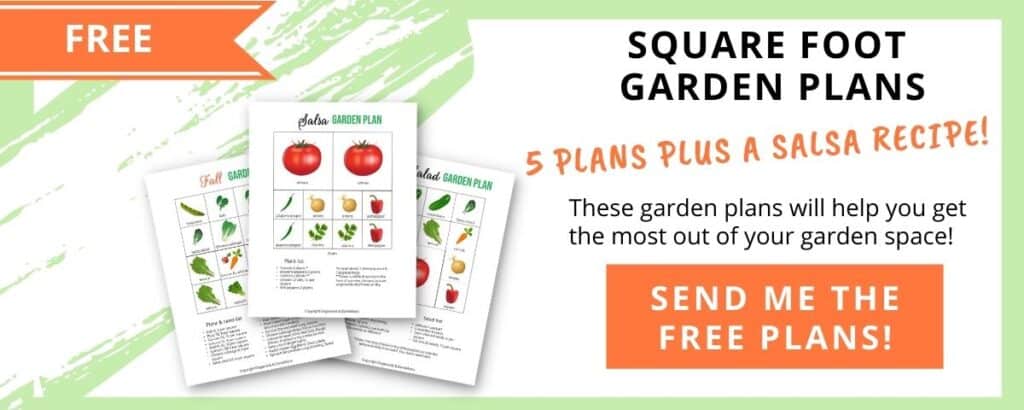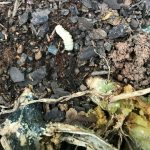How to Grow Summer Squash & Zucchini
Summer squash and zucchini are easy to grow in a backyard garden. They can be quite prolific if grown under the right conditions. This post shares all the details about how to grow summer squash and zucchini, how to harvest squash, pests and diseases you may encounter and some favorite varieties.

Affiliate Disclosure: Please note that some of the links in this article may be affiliate links and I may receive a small commission if you purchase something through a link. It will not change your cost. As an Amazon Associate, I earn from qualifying purchases. For more information, see my disclosures page.)
Types of Summer Squash
There are many types of summer squash and zucchini. While most yellow squash are considered squash and most green squash are considered zucchini, that is actually not how they are distinguished. The shape of the vegetable is actually what determines how they are classified. Squash have have a bulbous end that tapers towards the neck. Zucchini are generally straight from end to end.
You can have yellow zucchini and even white squash. For simplicity’s sake, in this post, I will be referring to squash and zucchini interchangeably as they are grown and harvested the same way.
How to Plant Squash and Zucchini
Squash and zucchini need to be planted in full sun after the last expected frost. Plant the seeds about an inch deep in a hole, 2-3 seeds per hole. Once the seeds have sprouted, you can thin to one plant per hole, however, I usually just leave them all.
While the seeds can be started indoors, I have found it doesn’t take much longer to just start squash seeds directly in the ground. One year I did an experiment and started several seeds indoors 2 to 3 weeks before our last frost date. I transplanted them into my garden on the same day I started more squash seeds directly in the ground. The transplants only produced squash 5 days before the ones sown directly in the garden.

Let me caution you against planting more than a couple of squash plants. They are quite prolific. It’s the reason the joke exists about locking your car doors at church during the summer. Otherwise you may end up with unwanted zucchini. Unfortunately, I often plant too many. So if you see me during the summer and don’t want my excess squash, you better head the other way!
If you talk to older gardeners, they will also talk about planting squash in hills. This is fine if you are planting in a traditional row garden. But here at Dogwoods & Dandelions, I always recommend to start a SMALL garden the first few years. That’s why I suggest raised bed gardening and square foot gardening. I want you to enjoy your garden, not have it be another chore on your never ending to-do list. I promise, 1 or 2 plants will provide you with plenty of squash!
How to Harvest Squash & Zucchini
Start checking for squash once blooms start to appear. At first, you may have mostly male flowers but female flowers aren’t usually far behind. (See picture below. The male flower is on the left. The female flower is on the right.) The female flowers will have a small squash between the stem and the flower whereas the male flowers just have a long stem before the flower.

Harvest squash and zucchini when the fruits are small, 4-5 inches long. Check the plants daily or at least every other day. It doesn’t take long for a small squash to turn into a big, baseball bat sized squash. Big squash tend to be seedy and more watery. If you do find overgrown ones, harvest them immediately so the plants don’t stop producing. You can add them to the compost pile, feed them to the chickens, or give them to the kids to play baseball with. (Yes, I’ve done all three!)
If you find you aren’t getting many squash, the problem is often either the weather being too cool (squash like it warm) or a lack of pollinators. If you see small squash not growing or rotting on the vine, this is usually a sign they aren’t receiving adequate bee activity for proper pollination. This is one reason I encourage planting a few flowers among your vegetables.
Pests and Diseases
Squash bugs
Squash bugs always seem to find my squash and zucchini. They are similar in appearance to stink bugs. My preferred method is to remove them and squish them. If you find the eggs, crush them as well. Neem oil can help control squash bugs, however before using anything on your garden, I highly recommend you do your own research to be sure you feel comfortable using the product on your garden.
Marigolds have often been found to help keep squash bugs away. This is not a foolproof method, but you will notice them in many of my garden plans. Sign up below to have the plans sent directly to your inbox.
Squash vine borers
Squash vine borers are winged, fly-looking insects that lay small black eggs on the stems of squash and zucchini. The eggs are very small and usually just look like a speck of dirt. As soon as the eggs hatch, the larvae immediately bore into the stem and start eating. This causes the plant to wilt and eventually die.
Squash vine borers are often difficult to spot, because you usually don’t know they are inside the plant until it is almost dead. If you can find where the larvae are, you can slit the stem, dig them out, and kill them. Many times, each plant is infected with several borers. This is my worst garden problem!
Since I have a difficult time getting rid of them, I often plant new squash and zucchini seeds every three to four weeks. I cover them with tulle netting until they start to bloom. Then I remove the netting so the bees can do their work of pollinating. This usually keeps me in squash and zucchini most of the summer.
Cucumber Beetles
Cucumber beetles can also attack squash. There are several types but most are yellow with either black stripes or black spots. Cucumber beetles are problematic because they transmit diseases (see below) to your squash plants. Pyrethrin is usually the best option to get rid of them, but again, do your own research to be sure that you are comfortable using it on your garden.
Diseases of Squash and Zucchini
Squash is susceptible to quite a few diseases such as downy mildew, powdery mildew, and wilt disease. Both downy and powdery mildew is more prevalent in humid climates. Neem oil is usually your best bet to fight these diseases.
Wilt disease is a bacteria that can be transmitted by the cucumber beetle. It causes the plant to wither and die and it is often hard to distinguish between wilt and squash vine borers. Check for borers first. However, if you determine that wilt is the cause of your plants withering, it is time to pull them up and dispose of them in the trash, not the compost pile.

Favorite Varieties
Since growing summer squash and zucchini is so easy, I’ve tried lots of varieties. These are a few of my favorites and several that are perfect for small gardens.
Summer Squash
Early Prolific Straightneck is an open pollinated variety that grows quickly and has huge yields on open plants that make picking easier.
Dixie Yellow Crookneck is a hybrid variety that has large yields of 5-6″ squash with the classic “crookneck”. It is an early variety that can be harvested in as little as 41 days. These squash hold up well in the refrigerator after picking.
Delta is a favorite of mine because it has resistance to powdery mildew. Delta produces lots of fruit on semi-compact plants so it is a great variety for smaller gardens.
Sunburst is a type of pattypan squash. They look a little bit like flying saucers. All pattypan are best harvested at 2-3″ for best flavor. After 4″ they get seedy.
Zucchini
Raven is a quick maturing variety of zucchini that has open plants to make harvesting easier. (No more baseball bats hiding under the leaves.) This is a good variety for small gardeners as it doesn’t sprawl like some plants can. The fruit is a deep, glossy green and the plants are fairly disease resistant.
Cocozelle is probably my favorite variety of zucchini, even though it is so hard to choose a favorite. Cocozelle is an Italian heirloom kind that is dark green with light green stripes. This is a another good zucchini for a small garden or even containers. It is perfect for freezing too.
Black Beauty is another dark green variety, that has been around since the 1920’s. This heirloom variety is delicious raw or cooked and it also freezes well.

Tromboncino is an unusual Italian heirloom zucchini because it can be harvested young as regular zucchini, but can also be left on the vine and harvested as a winter squash. These are unique looking, large zucchini, that look a bit like a butternut squash, only much longer, growing up to 3 feet! (Some garden catalogs actually classify these as squash.) Tromboncino need to be grown up a trellis or they will quickly take over your garden. I especially like this variety because the stems are smaller and not as open as regular zucchini, so squash vine borers tend to leave this variety alone.
As always, I share links to these seeds so that you can see what they look like. I encourage you to shop around for the best prices, or place an order through one of my favorite seed companies.
Your favorite varieties of summer squash and zucchini
If you have grown summer squash and zucchini before, I would love to know your favorite varieties. Do you have a kind that has worked well in your garden or one that tastes so delicious you have to grow it every year. If so, please leave a comment and let me know!
For further reading
- How to hand pollinate squash – Its super easy using this little trick.
- What to do about squash bugs and squash vine borers.
- Easy vegetables for children to grow.





